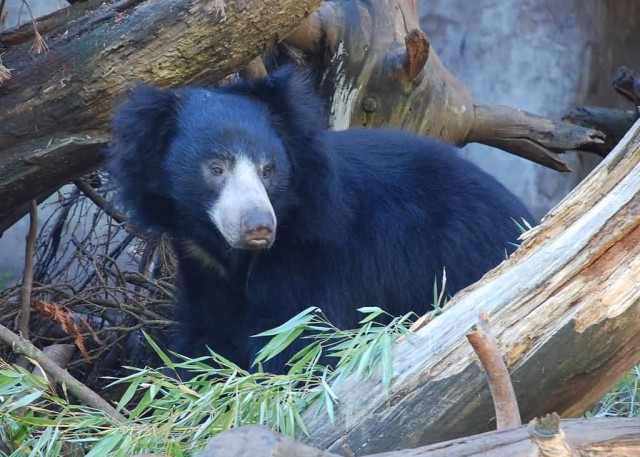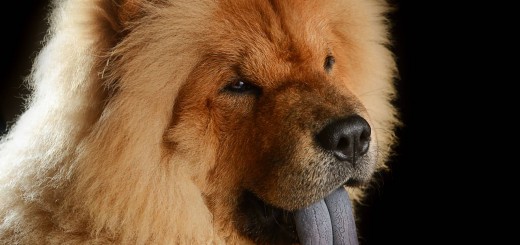7 Amazing Bears That Looks Like ‘Teddy Bear’

Polar Bear (Photo Credit: Michael Maher / CC BY 2.0)
Polar Bear
The polar bear is a carnivorous bear whose native range lies largely within the Arctic Circle encompassing the Arctic Ocean its surrounding seas and surrounding land masses. The polar bear is a marine mammal because it spends many months of the year at sea. However it is the only living marine mammal with powerful large limbs and feet that allow them to cover miles on foot and run on land.

Polar Bear (Photo Credit: robynm / Public Domain)
Polar bears rarely live beyond 25 years. Polar bears injured in fights or accidents may either die from their injuries or become unable to hunt effectively leading to starvation. The polar bear may swim underwater for three minutes to approach seals on land.

Polar Bear (Photo Credit: skeeze / Public Domain)
American Black Bear

American Black Bear (Photo Credit: Marie Hale / CC BY 2.0)
The American black bear is a medium-sized bear native to North America. It is the continent’s smallest and most widely distributed bear species. Black bears are omnivores with their diets varying greatly depending on season and location. They typically live in largely forested areas but do leave forests in search of food. Sometimes they become attracted to human communities because of the immediate availability of food. The American black bear is the world’s most common bear species. American black bears often mark trees using their teeth and claws as a form of communication with other bears a behavior common to many species of bears.The fur is soft with dense under fur and long, coarse, thick guard hairs.

American Black Bear (Photo Credit: Mark Betram / Public Domain)
Up to 85% of the black bear’s diet consists of vegetation though they tend to dig less than brown bears eating far fewer roots, bulbs, corms and tubers than the latter species.The flesh of the bear is savoury but rather luscious and tastes not unlike pork. It was once so common an article of food in New-York as to have given the name of Bear Market to one of the principal markets of the city. The most favoured cuts of the black bear’s meat are concentrated in the legs and loins. Meat from the neck, front legs and shoulders is usually ground into minced meat or used for stews and casseroles. Black bear fat was once valued as a cosmetic article which promoted hair growth and gloss.
Asian Black Bear

Asian Black Bear (Photo Credit: Joydeep / CC BY-SA 3.0)
The Asian black bear is also known as moon bear and white-chested bear. It is a medium-sized bear species and largely adapted to arboreal life. It is found in the Himalayas in the northern parts of the Indian Subcontinent. Though largely herbivorous Asian black bears can be very aggressive toward humans who frequently trap or kill them for traditional medicine.
Their skins are always poor and mangy and generally so greasy that they are very difficult to keep until you can make them over to the dresser. Asian black bears yield fur, meat and fat of greater quality than those of brown bears. Bear bone glue is used as a tonic and bear fat is also used as a traditional medicine and a tonic. Black bear meat is also edible. Due to their many uses black bears are worth about 20–30 million dong each in Vietnam.

Asian Black Bear (Photo Credit: Kyle Taylor / CC BY 2.0)
Brown Bear

Brown Bear (Photo Credit: Wikipedia / CC BY-SA 3.0)
The brown bear is a large bear distributed across much of northern Eurasia and North America and is the largest land-based predator on earth. There are several recognized subspecies within the brown bear species. The brown bear is recognized as a national and state animal in several European countries. It is the most widely distributed of all bears.
Brown bears have long thick fur with a moderately long mane at the back of the neck. In India brown bears can be reddish with silver tips while in China brown bears are bicolored with a yellow-brown or whitish cape across the shoulders. North American grizzlies can be dark brown to cream or yellowish brown. Black hairs usually have white tips. The winter fur is very thick and long especially in northern subspecies and can reach 11 to 12 centimetres at the withers. The winter hairs are thin yet rough to the touch. The summer fur is much shorter and sparser and its length and density varies geographically.

Brown Bear (Photo Credit: Magnus Johansson / CC BY-SA 2.0)
The mating season is from mid-May to early July. They often feed on a variety of plant life, including berries, grasses, flowers, acorns and pine cones as well as fungi such as mushrooms. Among all bears, brown bears are uniquely equipped to dig for tough foods such as roots and shoots. They use their long strong claws to dig out earth to reach the roots and their powerful jaws to bite through them.

Brown Bear (Photo Credit: Spencer Wright / CC BY 2.0)
Giant Panda
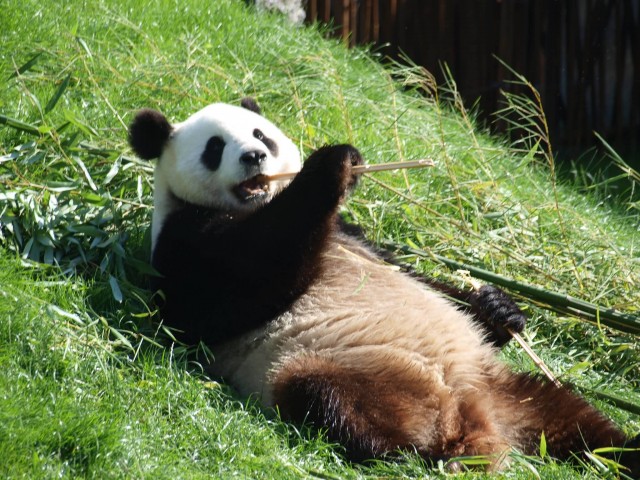
Giant Panda (Photo Credit: Nigel Swales / CC BY-SA 2.0)
The giant panda also known as panda bear or simply panda, is a bear native to south central China. It is easily recognized by the large distinctive black patches around its eyes, over the ears, and across its round body. Giant pandas in the wild will occasionally eat other grasses, wild tubers or even meat in the form of birds, rodents or carrion. In captivity they may receive honey, eggs, fish, yams, shrub leaves, oranges or bananas along with specially prepared food. The giant panda lives in a few mountain ranges in central China.

Giant Panda (Photo Credit: gill_penney / CC BY 2.0)
Sloth Bear
The sloth bear also known as the Stickney bear or labiated bear is a nocturnal insectivorous species of bears found wild within the Indian Subcontinent. Brown and black bears sloth bears have lankier builds, long, shaggy coats that form a mane around the face, long, sickle-shaped claws and a specially adapted lower lip and palate used for sucking insects.

Sloth Bear (Photo Credit: Paul Lewis / CC BY-SA 2.0)
Sloth bears breed during spring and early summer and give birth near the beginning of winter. They feed on termites, honeybee colonies and fruits. Sloth bears sometimes attack humans who encroach on their territories. Historically humans have drastically reduced their habitat and diminished their population by hunting them for food and products such as their bacula and claws. These bears have been used as performing pets due to their tameable nature.
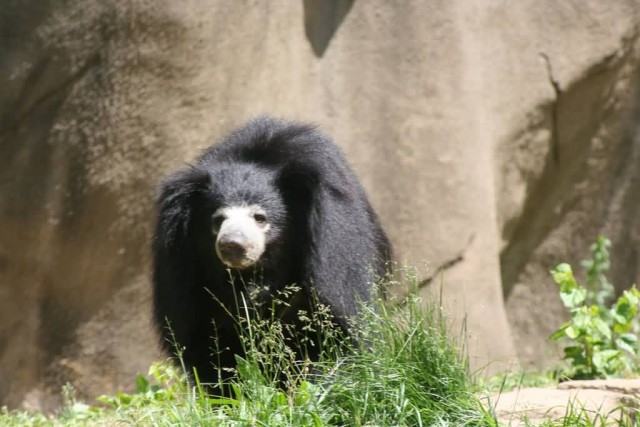
Sloth Bear (Photo Credit: the_great_nanners / CC BY 2.0)
Sun Bear

Sun Bear (Photo Credit: PublicDomainPictures / Public Domain)
The sun bear is a bear found in tropical forest habitats of Southeast Asia. The Malayan sun bear is also known as the honey bear which refers to its voracious appetite for honeycombs and honey. The sun bear’s fur is usually jet-black, short and sleek with some under-wool some individual sun bears are reddish or gray.
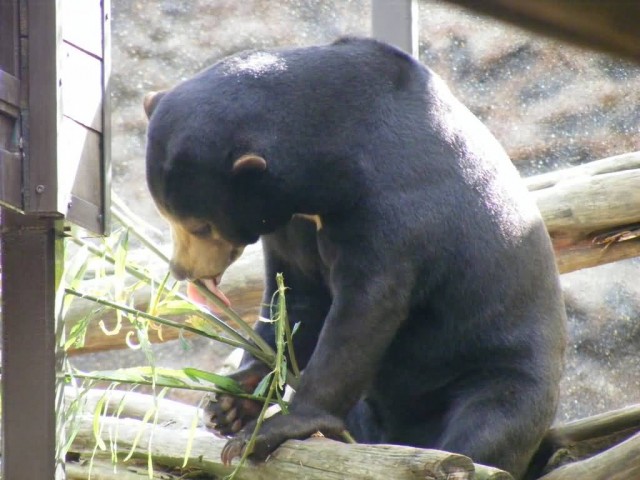
Sun Bear (Photo Credit: Marie Hale / CC BY 2.0)
There are two whirls on the shoulders from where the hair radiates in all directions. There is a crest on the sides of the neck and a whorl in the centre of the breast patch. The skin is naked on the upper lip. The tongue is long and protrusible. The ears are small and round broad at the base and capable of very little movement. The front legs are somewhat bowed with the paws turned inwards and the claws are cream. The sun bear is the smallest of the bears. Adults are about 120-150 cm long and weigh 27-80 kg. Males are 10-20% larger than females. Bees, beehives and honey are important food items of sun bears.

Sun Bear (Photo Credit: Bambi_D / Public Domain)


